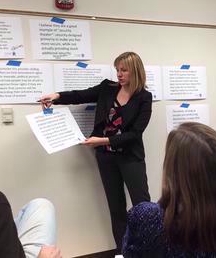Help by Any Means: Sociotechnical Protocols for Multimedia Requests for Assistance to Next-Generation 911 Services
Between 1968, when 911 was designated as the national emergency number, and 1993, when 90% of Americans gained access to 911 services, public education campaigns taught citizens how to dial 9-1-1 for help during an emergency and dispatchers trained to process telephone calls from citizens in distress. Now, with the adoption of Next-Generation 911 (NG911) systems, how to “call” for help becomes more complex: citizens will be able to send text, image, and video data in SMS/MMS messages (and possibly even a social media channel) to 911 dispatchers who remain trained as call takers, not data analysts.
While nascent computational methods exist to processes multi-channel, multimedia requests for assistance and recent fieldwork with 911 dispatchers at Public-Safety Answering Points (PSAPs) specify requirements to process these requests, the protocols necessary to coordinate uses of NG911 systems around multi-channel, multimedia data remain unspecified and much less standardized among emergency response officials and the public. These protocols include instructions for what citizens should include in multimedia 911 messages, PSAP procedures for coordinating citizen use of alternative 911 channels, and updated call taking and dispatch protocols facilitating collaborative sensemaking of multi-channel, multimedia information that enhances situational awareness among first responders during an emergency.
This planning grant supports efforts to engage citizens, 911 dispatchers, and first responders to co-design Help by Any Means (HAM) protocols that will coordinate the use of multi-channel, multimedia requests for assistance during a crisis. These efforts will contribute to the transformation of emergency services around NG911 infrastructures, including the design of public service announcements educating citizens when and how to request help using alternative and multimedia 911 communications, as well as PSAP procedures for processing and integrating multimedia information in ways that enhance emergency response capacities. Additional contributions include understanding the social and technical implications of text-to-911 and social media-to-911 services as viewed by a range of stakeholders in the NG911 transition, as well as adduce insights into the design and management of data-driven public services beyond those of emergency response.
-
Performance PeriodJuly 2020 - June 2022
-
University of Cincinnati Main Campus
-
Award Number1951917
-
 Lead PIJessica Kropczynski
Lead PIJessica Kropczynski -
Co-PIRob Grace
-
Co-PIShane Halse
-
Co-PIAndrea Tapia
Project Material
- Data Census of a Geographically-Bounded Tweet Set to Enhance Common Operational Picture Tools
- How to text 911: A content analysis of text-to-911 public education information
- An Exploration of Methods Using Social Media to Examine Local Attitudes Towards Mask-Wearing During a Pandemic
- Actionability in a Situation Awareness world: Implications for social media processing system design
- Communicating Next-Generation 911 with local 911 professionals: Preliminary recommendations
- 2021: Help by Any Means: Sociotechnical Protocols for Multimedia Requests for Assistance to Next-Generation 911 Services
- 2021: Help by Any Means- Sociotechnical Protocols for Multimedia Requests for Assistance to Next-Generation 911 Services
Jess Kropczynski, PhD is an Associate Professor at the School of Information Technology at the University of Cincinnati. Her research interests are primarily in the design and evaluation of civic technology to support collective action in community networks ranging from city planning to emergency management. She has also worked with local and state governments to assess the communication and information needs of target audiences in order to promote informed decision-making.